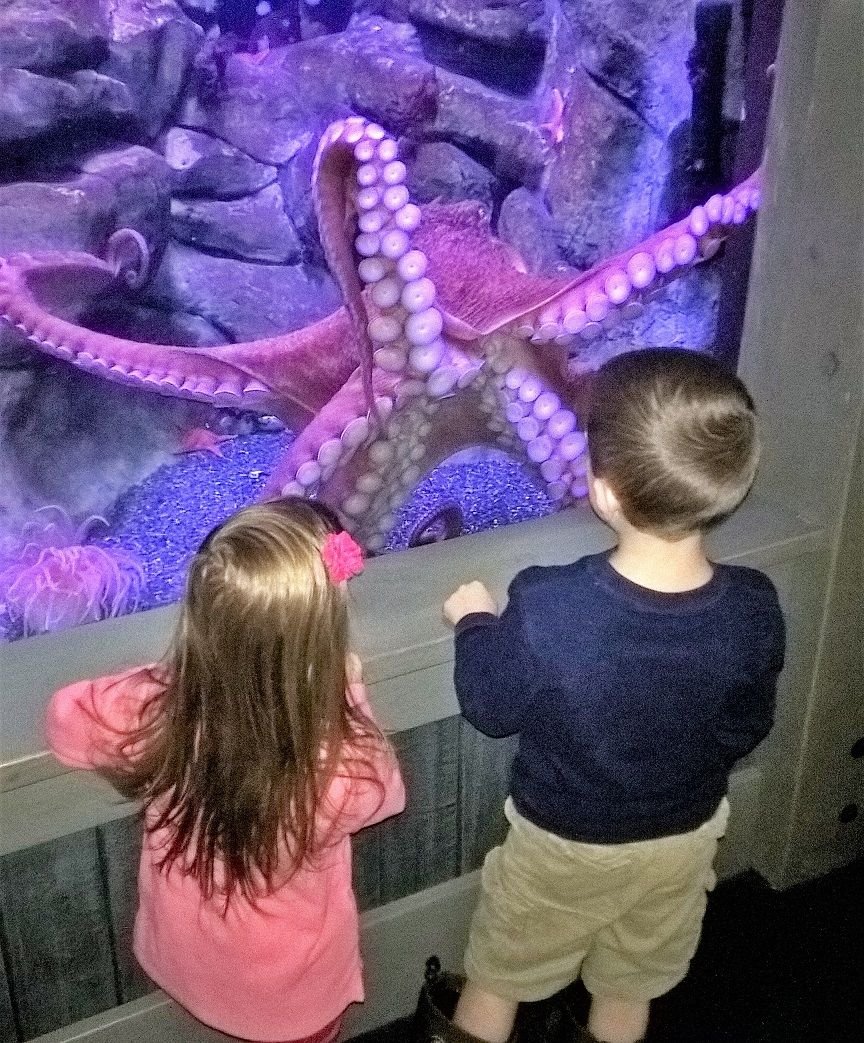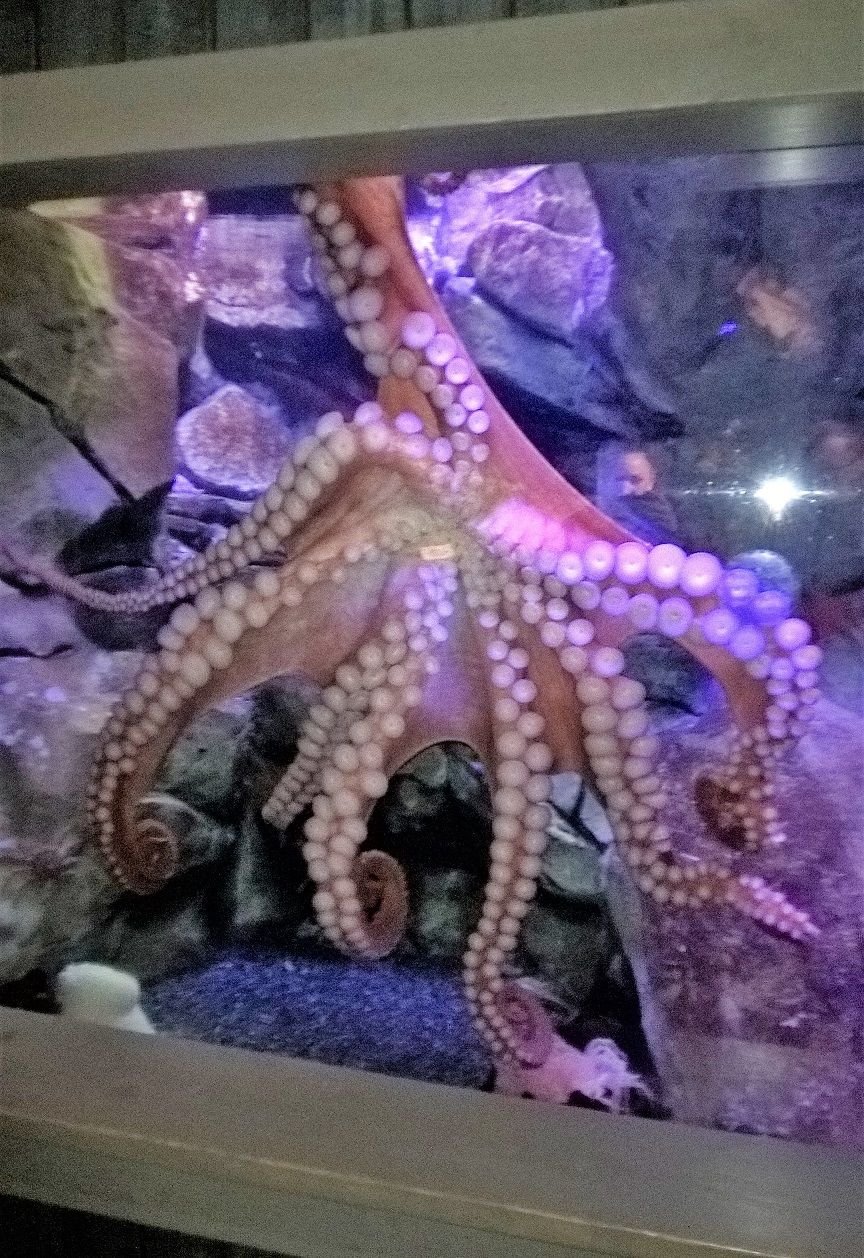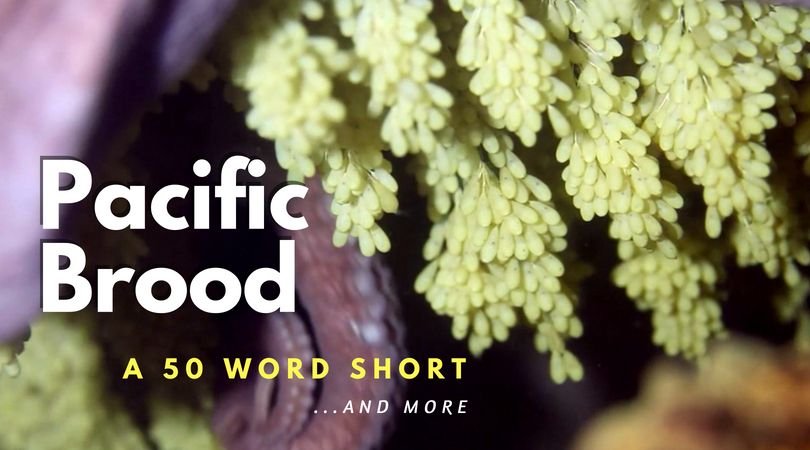This is a 50 word short story for @Jayna's current prompt: "hatch."
Also, continue reading after the short for a scientific Mother's Day blog post and a little background on the 50 word short.
Tucked in a crevice, they hang beside her like chandeliers. Her pulsing breaths keep them clean. Safe. Motherhood keeps her rooted—not even a moment to eat. Gently, she brushes over them.
More than fifty-thousand burst forth and begin their fragile lives. Her final breath propels them into the great deep.
Please click the title image above for an amazing video filmed in the waters of Puget Sound by Laura James. Licensed under Creative Commons Attribution 3.0 Unported
This 50 word prompt inspired me to wander outside of fiction. It made me think of the greatest hatch I’ve ever come to know—the Giant Pacific Octopus.
If you were to ask me what my favorite animal is I would find it difficult to choose just one from the Cephalopod family. The bio-luminescence or color shifting abilities of various cephalopods is mind boggling, their biology is so incredibly unique, and how could someone not be amused by a Nautilus jetting through the water. I love them all, but I suppose I’ve interacted with and come to know the Giant Pacific Octopus best.
Populations of this octopus exist in Alaska and Puget Sound—two locales that are central to the person I am (just take a look at my username). One of the densest populations resides in Puget Sound, where some of the largest examples of the species have been found. They can grow up to one-hundred and fifty pounds (68kg) with tentacles stretching up to twenty feet (6 meters). However, the largest on record was six-hundred pounds (272kg) and measured thirty feet across (9 meters).
A research and rescue aquarium that we often visit in Seward, Alaska (about a three hour drive from my house) is home to a female Pacific Giant Octopus named Gilligan. These (low quality phone) photos taken in November, 2016 show my kids watching her move about the tank and provide some idea of her size.

Gilligan is usually inactive when we visit. We were enamored with the privilege to watch her move about.

Two drastically different creatures exchanging glances through the glass.

Gilligan spread across the entire height of the glass, really giving an idea of her size.
During our visit last October, Gilligan had a new surprise. A plethora of rice-sized eggs hung beside her. I talked with one of the staff for a while, learning all sorts of things about Giant Pacific Octopus motherhood.
It took Gilligan a month to build the strands that hold the thousands upon thousands of eggs, suspending them on the rock wall in her habitat. The eggs hatched at the end of April—almost a full year after she laid them. The mother went from fifty pounds down to thirty pounds in that time span.
In the wild, octopus mothers die after their brood has hatched, literally propelling them from safety into the wild ocean with her last breath. However, in the comfort of the caring hands at the SeaLife Center, Gilligan began eating again and remains alive.
On our last visit I was told that raising newborn octopi in captivity is extremely rare, and difficult. Their tiny bodies—already resembling their mother with the signature eight tentacles—are incredibly fragile. Only one aquarium has successfully nurtured a newborn into adulthood, and that was in the 80s at the Seattle Aquarium.
I was informed that the SeaLife Center's plan is to use a circulating tank very similar to what they use to house sea jellies. Bumping against a hard aquarium tank would burst the minuscule cephalopod’s body, so a current through a round tank prevents this from happening. They have the vastness of a whole ocean in the wild to grow up in, after all.
I can’t wait to go back to the SeaLife Center for another visit—one of the special tanks with some of the newborns is next to Gilligan’s habitat now. I will be curious to follow their progress, considering that even in the wild less than one-percent of young survive into adulthood. Their small size makes them victim to many a predator, but even with that threat removed it will still be challenging to provide the proper nutrition and conditions that will allow these babies to thrive.
I hope you enjoyed this post. Considering that Mother’s Day is this weekend, I think the display of motherly sacrifice exhibited by this animal is a perfect opportunity to reflect on the difficulty of raising children.
The time she takes to carefully lay her eggs, the sacrifice in her own health to protect them during incubation—to the point of death—all so that approximately two of sixty-thousand may survive. Wow!
I am blessed to have an amazing wife who is a loving mother to my two children. I’m thankful it won’t weaken her to the point of death, but nevertheless, it’s still an incredibly difficult task. I thank her for the sacrifices she makes every day to provide an opportunity for my kids to grow up and live fulfilling lives.
To all mothers and everyone with a mother, have a Happy Mother’s Day. Consider something you can do this Sunday to make sure she knows how grateful you are, and affirm that her sacrifices are immeasurably appreciated.

